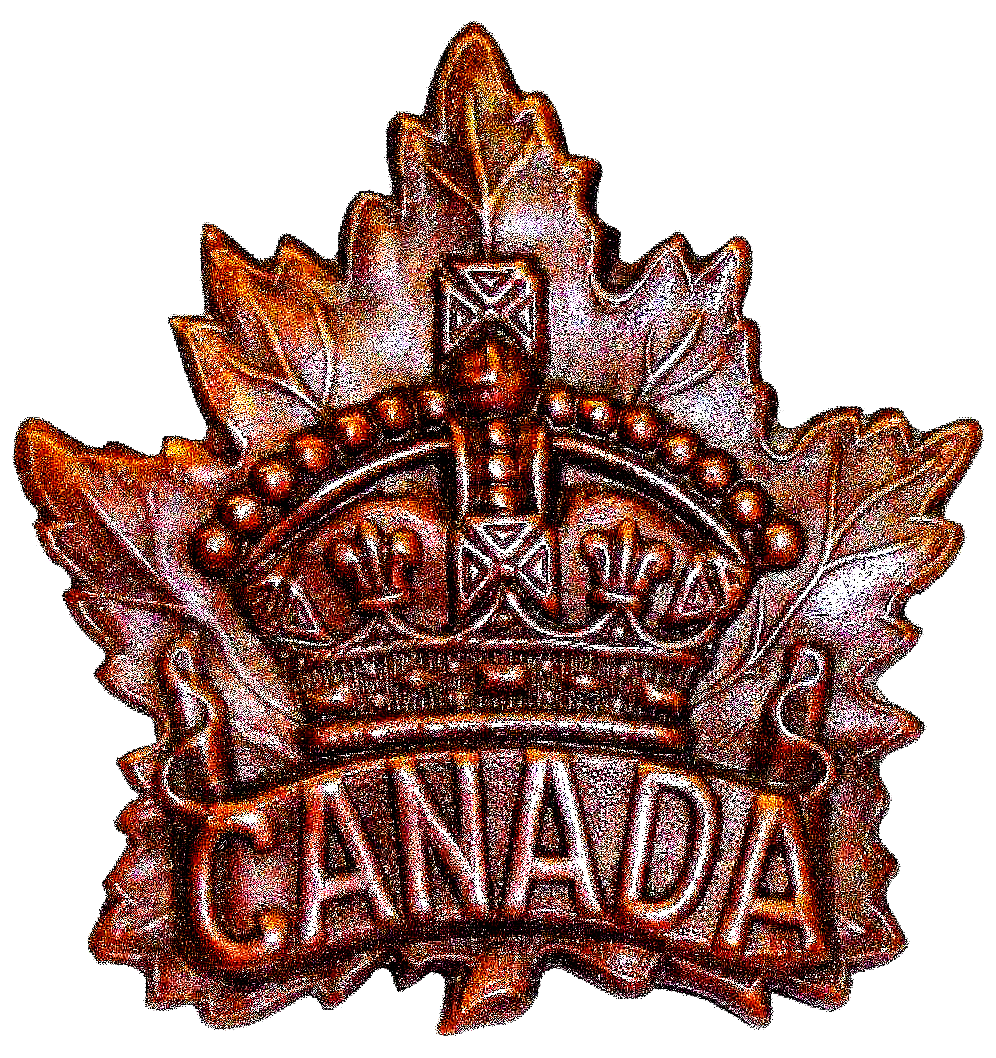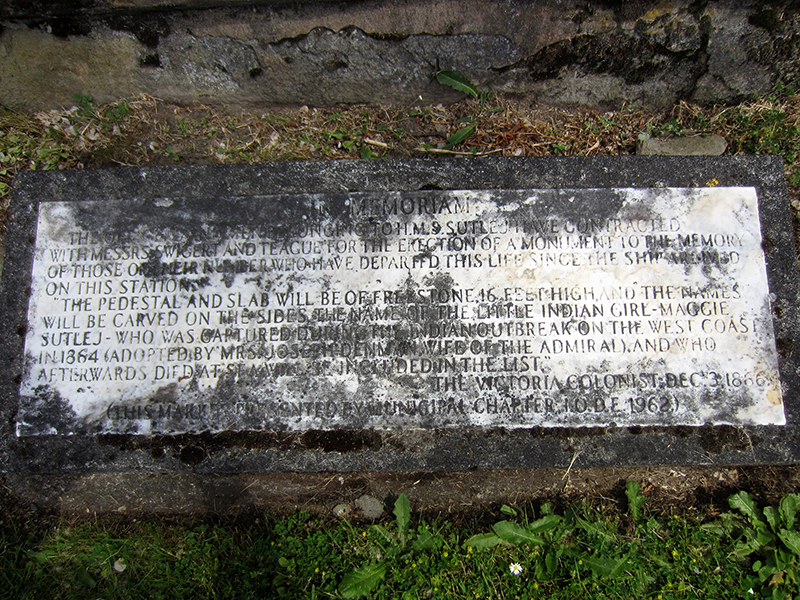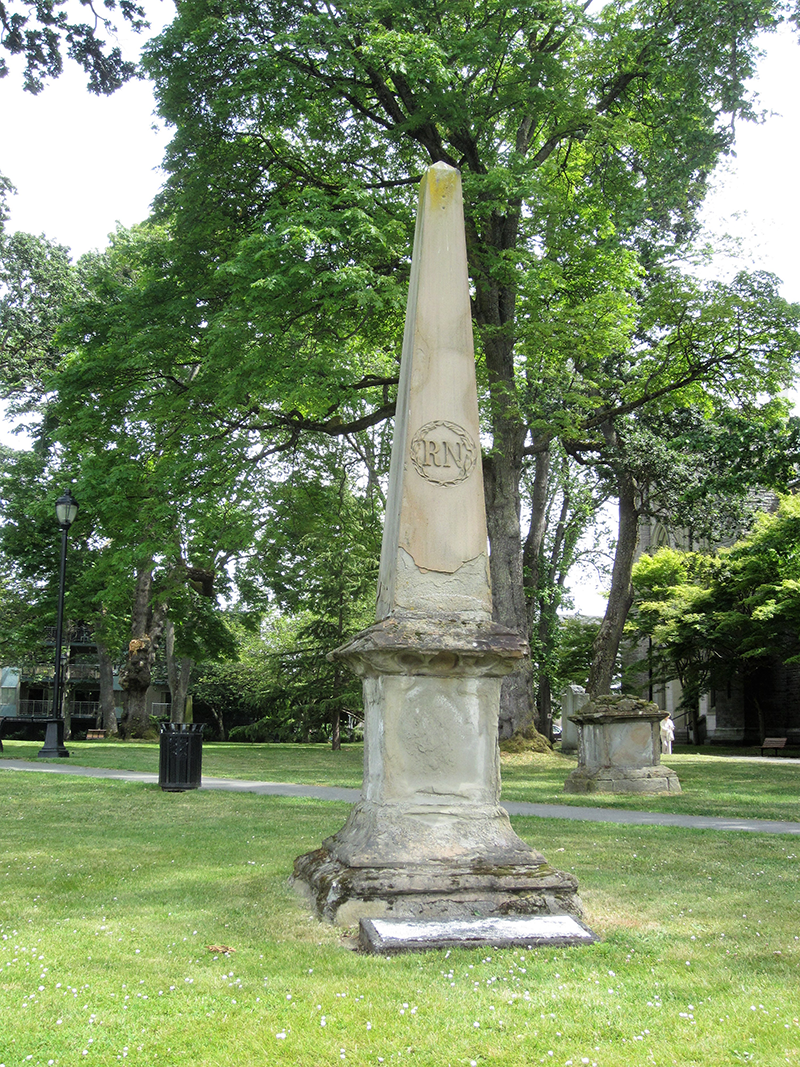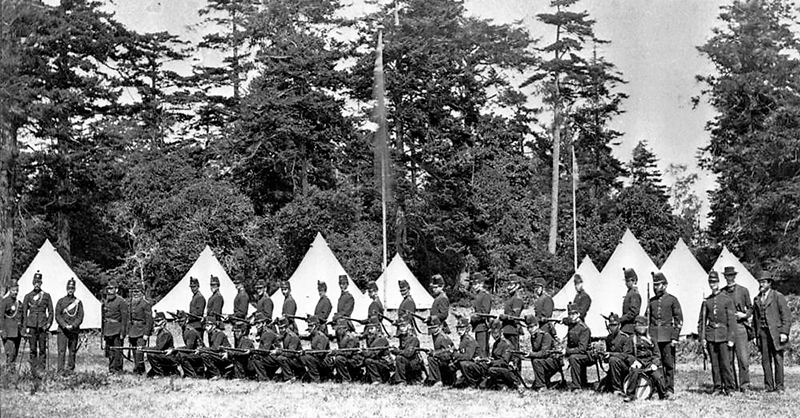 |
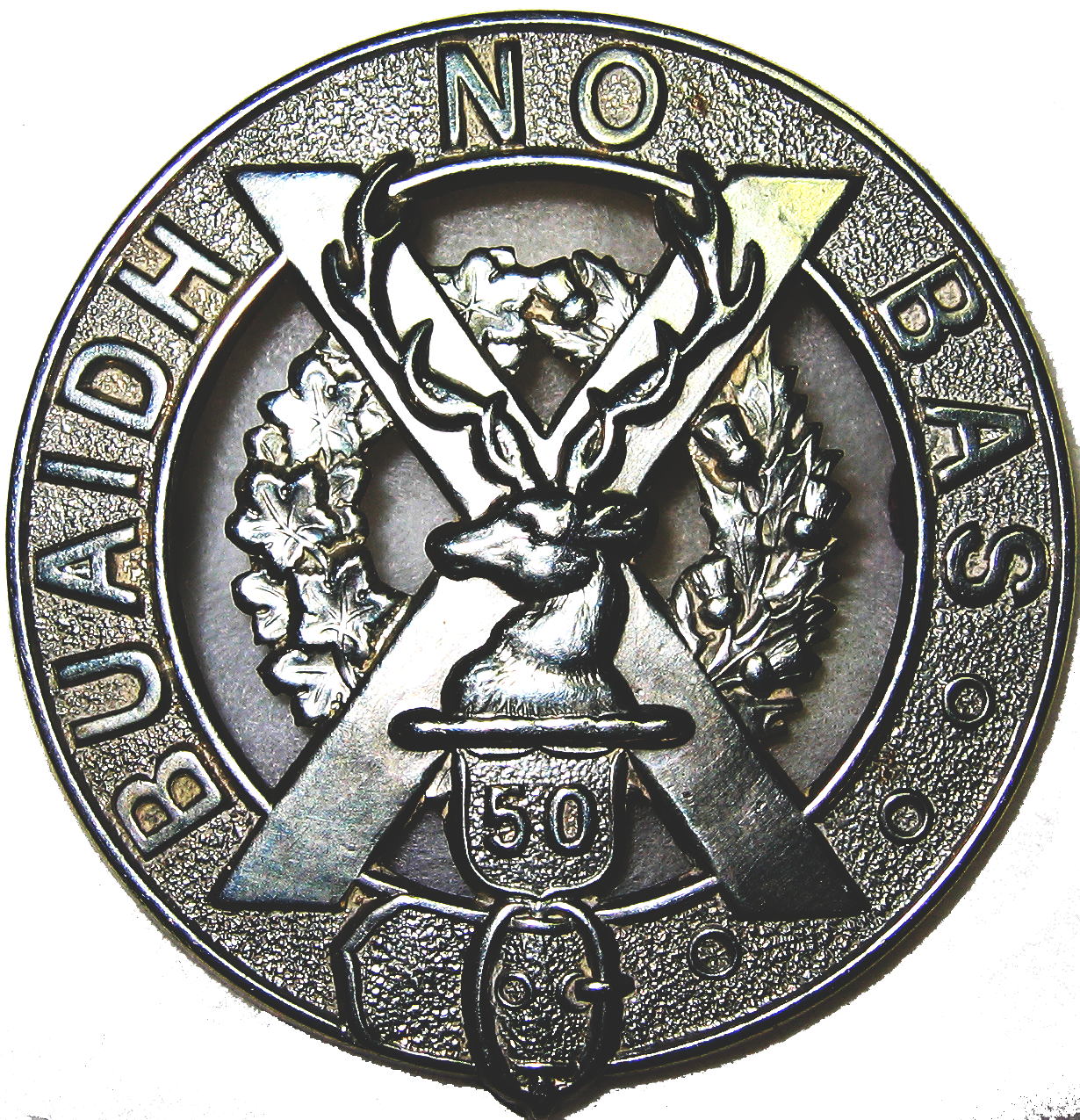 OPCMHVisitor No.: |
HISTORY OF WORK POINT BARRACKSby Jack BatesPART 1 — 1842 to 18861864Still requiring a local militia in Victoria, on March 19, The Victoria Rifle Volunteer Corps was formed. There were two companies, they established a camp at Beacon Hill Park and functioned until December 1873, when they also disbanded. VICTORIA DAILY CHRONICLE VICTORIA PIONEER RIFLE CORPS Click to view PDF of VPRC advertisements 1865Lovat 1846-1893
ESQUIMALT Order in Council passed in London, creating the Royal Naval Establishment at Esquimalt. The Naval Base was placed on a permanent footing on 29th of June replacing Valparaiso, Chile, as the headquarters of the Royal Navy Pacific Fleet. 1866On August 6, 1866, the United Colonies of Vancouver Island and British Columbia was established, with the capital in Victoria and Frederick Seymour its first governor. COLONIST IN MEMORIAM – The officers and men belonging to H.M.S. Sutlej have contracted with Messrs Swigert & Teague for the erection of a monument to the memory of those of their number who have departed on this station. The pedestal and slab will be of freestone, sixteen feet high, and the names will be carved on the sides, the name of the little Indian girl – “Mary Sutlej” – who was captured during the Indian outbreak on the West Coast in 1864, and who afterwards died at sea, will be included in the list. This monument can be seen at the southwest corner of Pioneer Square next to Christ Church Cathedral.
1867COLONIST TELEGRAPH TO ESQUIMALT The work of constructing a telegraph line from Victoria to Esquimalt was completed on Friday, and messages may now be transmitted from place to place. COLONIST THE FIRE ON DEADMAN’S ISLAND The fire of Sunday evening on Deadman’s Island destroyed the Indian graves and remains. The island has been used as a burial place by the Songish or Flathead Indians for many years. The dead were placed in boxes or square coffins and left above the ground to decay. All the “big” men of the tribe – the hyas lyhees and their wives – were sent to the island for their last sleep. Carved images, intended to represent departed chiefs, generally appeared at the side of the boxes. The favorite weapons, canoes, trinkets, and occasionally a few blankets, were deposited by the side of the corpse in the belief that the right of possession did not cease with death, and that the more the deceased was encumbered with this world’s goods when he departed for the happy hunting grounds, the more acceptable he would prove to the great Spirit. All the relics and mementoes were destroyed on Sunday. The torch of some sacreligious incendiary fired the shrubbery that covered the island, and the fire-fiend sent forth his tongues in every direction. The flames raged all Sunday, destroying nearly every consumable object on the island; the neighborhood was pregnant with the horrid smell of burning animal matter, while the rats, disturbed in the midst of their horrid meal, leaped into the water and swam across the harbor to the nearest shore. The trees, shrubbery and the relics were consumed while the ghastly skeletons, blacked by fire and smoke, yesterday lay exposed on the ground. The scoundrel who fired the heap, if discovered, should be well punished. Also named Halkett Island in the Victoria Upper Harbour. 1868COLONIST AWAY AT LAST – The powder magazine was towed from Shoal Pointon Saturday, by the steamer Enterprise, to a safe position in Esquimalt Harbor. This could be the floating magazine that Donald Macaulay was in charge of in 1863. COLONIST Inquest: An inquest was held on Saturday by the Coroner, upon the body of Mr. Donald Macaulay, at Esquimalt. It appears from the evidence that shortly before the deceased went out fishing in a small risky boat, and that on drawing in a stone which he used as an anchor, he fell overboard, and was unable to extricate his hand from the rope in which it got twisted, by some means. When discovered in the morning by the milk boy going across to the naval hospital, the hand was seen a little way beneath the surface. Under the circumstances the jury found a verdict of accidental drowning. Mr. Macaulay was an employee of the Hudson’s Bay Co for over thirty years, and at the time of his death had charge of the company’s powder magazine at Esquimalt. The funeral took place from St. Andrews church yesterday. Deceased was over sixty years old. 1870BC ARCHIVES
|
